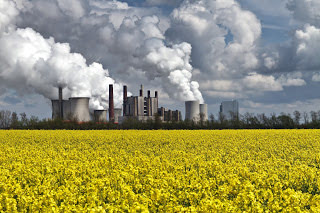California continues to lead fight against climate change
August 25, 2016
Posted in Blog article
The California Senate passed SB32 yesterday, which codifies an executive order Gov. Brown issued on April 29, 2015 establishing the most ambitious greenhouse gas reduction target in North America. The legislation is intended to make it more difficult for Gov. Brown’s successor to back off of his aggressive emission reduction goals.
The bill passed one day after the California Assembly passed it. Gov. Jerry Brown has said he will sign it.
The fate of SB32 is ultimately tied to another bill, AB197, which calls for greater legislative oversight of the California Air Resources Board, the entity which implements much of California’s climate policy. Both bills must pass or neither will take effect. However, AB197 was approved by the Assembly on Wednesday, and Gov. Brown said he will also sign AB197, ensuring that SB32 will also become effective.
SB32 extends California’s existing climate change law by 10 years to 2030. It also sets a new goal of reducing greenhouse-gas emissions 40% below 1990 levels by 2030. The legislation builds off of AB32, which was passed in 2006 and called for California to reduce greenhouse gases to 1990 levels by 2020. The original goal in the 2006 law was an approximately 15% reduction to a “business as usual” scenario. California is currently expected to reach the original 2020 target, which is 431 million metric tons of carbon dioxide equivalent, on time. The new 40% reduction target will limit emissions to 258.6 million metric tons of carbon dioxide equivalent per year.
The passage of SB32 is a victory for Gov. Brown. Last year, a similar bill failed after Gov. Brown sought to include provisions that would have cut petroleum use in half by 2030. Despite that bill’s failure, California did pass legislation that required a 50% energy efficiency increase for existing California buildings and a mandate that half of California’s electricity be generated by renewable resources, both by 2030.
One specific requirement of the 2006 law was the preparation of a “scoping plan” for achieving the maximum technologically feasible and cost-effective greenhouse gas emission reductions by 2020. The plan, which sets forth California’s strategy for meeting the emission reduction goals, is required to be updated at least once every five years. The scoping plan is currently being updated to address the Governor’s April 2015 executive order calling for 40% reductions by 2030. The update will now presumably address the newly enacted law instead of the executive order.
Some of the programs that are intended to implement AB32 and reduce greenhouse gas emissions include the Low Carbon Fuel Standard Program, the Advanced Clean Cars Program, the Short-Lived Climate Pollutant Strategy and a cap and trade program.
The cap and trade program, which the latest update to the scoping plan calls a “vital component” in achieving emissions goals, is currently being challenged in the courts by the California Chamber of Commerce. The Chamber of Commerce is arguing that it is a tax that should have been approved by a two-thirds vote (it only passed with a majority vote). The litigation has caused significant uncertainty around the program, leading to decreased participation and disappointing results. Earlier this week, it was announced that the latest auction again fell short of expectations with only 32% of allowances being sold, raising only about $8,000,000 for the state.
The California Air Resources Board’s website indicates that the reductions in emissions will come from “virtually all sectors of the economy” and be achieved through a combination of “policies, planning, direct regulations, market approaches, incentives and voluntary efforts”. SB32 should give additional certainty to businesses and regulators as they plan beyond 2020.


